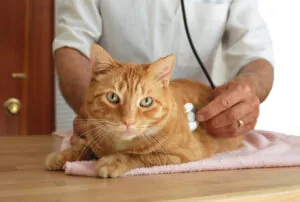Can You Move a Cat’s Litter Box? Tips for a Smooth Transition
As a cat owner, you may find yourself facing the question of whether you can move your cat’s litter box to a new location. It could be due to a change in your home’s layout, a new addition to the family, or simply because you want to reorganize your space. So, can you move your cat’s litterbox?
By considering your cat’s preferences and habits, using positive reinforcement, and monitoring their behavior and health during the transition, you can successfully move the litter box with minimal stress for both you and your feline friend.
In this article, we’ll explore the factors to consider and provide tips on how to successfully move your cat’s litter box.

Factors to Consider Before Moving the Litter Box
Stability
Cats are creatures of habit and prefer a stable environment. A sudden change in the location of their litter box might cause stress and confusion. When planning to move the litter box, consider the reasons for the change and whether it’s truly necessary.
Accessibility
Ensure that the new location is easily accessible to your cat. Avoid placing the litter box in a high-traffic area, near their food or water, or in a noisy environment, as this might discourage your cat from using it.
Multiple Cats
If you have multiple cats in your household, each should have their own litter box. Moving a shared litter box might cause territorial issues and lead to improper elimination.
Size and Design
The size and design of the litter box might also influence your cat’s willingness to use it in the new location. Make sure the litter box is large enough for your cat to comfortably use and has a design that suits their preferences, such as an open or covered box.
Senior Cats and Kittens
The age of your cat might also impact their ability to adapt to a new litter box location. Senior cats may have more difficulty adjusting to change, while kittens may be more adaptable but require closer monitoring to ensure they’re using the new litterbox correctly.
How To Move Your Cat’s Litterbox The Right Way
Gradual Approach
Instead of making a sudden change, move the litter box a few inches each day towards the new location. This gradual approach allows your cat to get accustomed to the change without feeling overwhelmed.
Dual Litter Boxes
Temporarily provide a second litter box in the new location while keeping the original one in place. This allows your cat to familiarize themselves with the new spot and gives them the option to choose between the two. Once your cat starts using the new litter box consistently, you can remove the original one.
Positive Reinforcement
Encourage your cat to explore the new litter box location by using positive reinforcement. Offer treats, praise, or playtime when your cat successfully uses the new litter box.
Maintain Cleanliness
Keep the litter box clean and fresh, as a dirty litter box might discourage your cat from using it. Scoop the litter box daily and wash it with mild soap and water weekly.
Scent Transfer
Help your cat recognize the new location by transferring their scent to the new litter box. You can do this by placing some of the used litter from the old box into the new one or by rubbing a soft cloth on your cat’s face and then on the new litter box.
What to Do During and After The Move
Monitor Your Cat’s Behavior 
Keep an eye on your cat’s behavior and elimination habits during and after the transition. If your cat refuses to use the new litter box or starts eliminating outside of it, consult with a veterinarian or a professional cat behaviorist for guidance.
Patience is Key
Remember that some cats may take longer to adapt to the change than others. Be patient and give your cat ample time to adjust to the new litter box location. Understand that every cat is different, and some may require additional time and support to feel comfortable with the change.
Addressing Litter Box Aversion
In some cases, a cat may develop a litter box aversion during the transition process. To address this issue, you can try using a different type of litter, providing a larger or more private litter box, or experimenting with various litter depths. Always consult with your veterinarian if your cat continues to avoid the litter box or exhibits signs of distress.
Keep an Eye on Health
During the transition, monitor your cat’s overall health to ensure that any elimination issues are not related to an underlying health problem. Symptoms such as frequent urination, straining, or blood in the urine could indicate a medical issue that requires veterinary attention.
Seek Professional Guidance
If you’re struggling to help your cat adapt to the new litter box location, don’t hesitate to seek professional guidance from a veterinarian or a certified cat behaviorist. They can offer valuable insights and recommendations to make the process smoother for both you and your feline companion.
Conclusion
Moving a cat’s litter box can be a delicate process, but with careful planning, patience, and a gradual approach, it’s possible to make a smooth transition. Remember to consult with a professional if you encounter any issues and always prioritize your cat’s comfort and well-being throughout the process.
For pet parents in the Lewisville, NC area, Shallowford Animal Hospital is here to help you and your pet. Give us a call at (336) 945-4412 or make an appointment online.
Share This Post
Recent Posts
About Shallowford Animal Hospital
Shallowford Animal Hospital and The Pet Spa at Shallowford are dedicated to the exceptional, compassionate care your pet deserves. Pets hold a very special place in our families, and we treat yours like our own.



